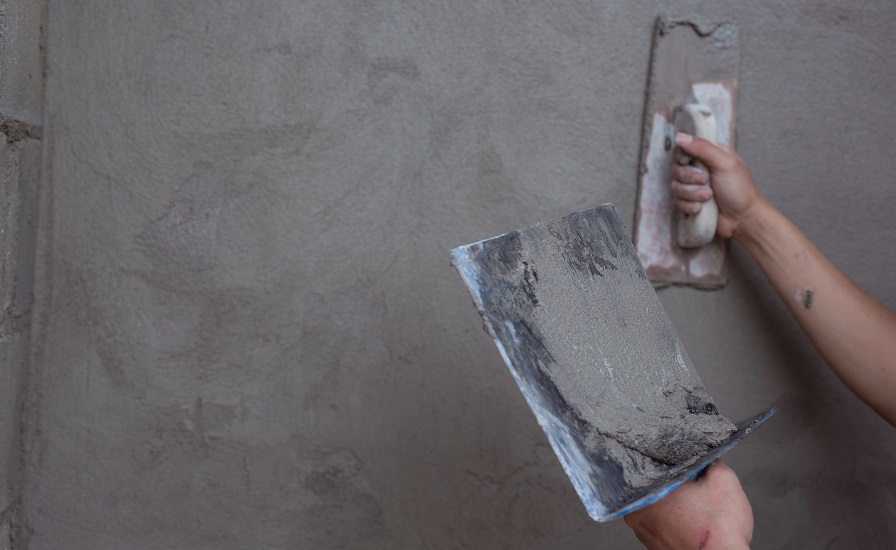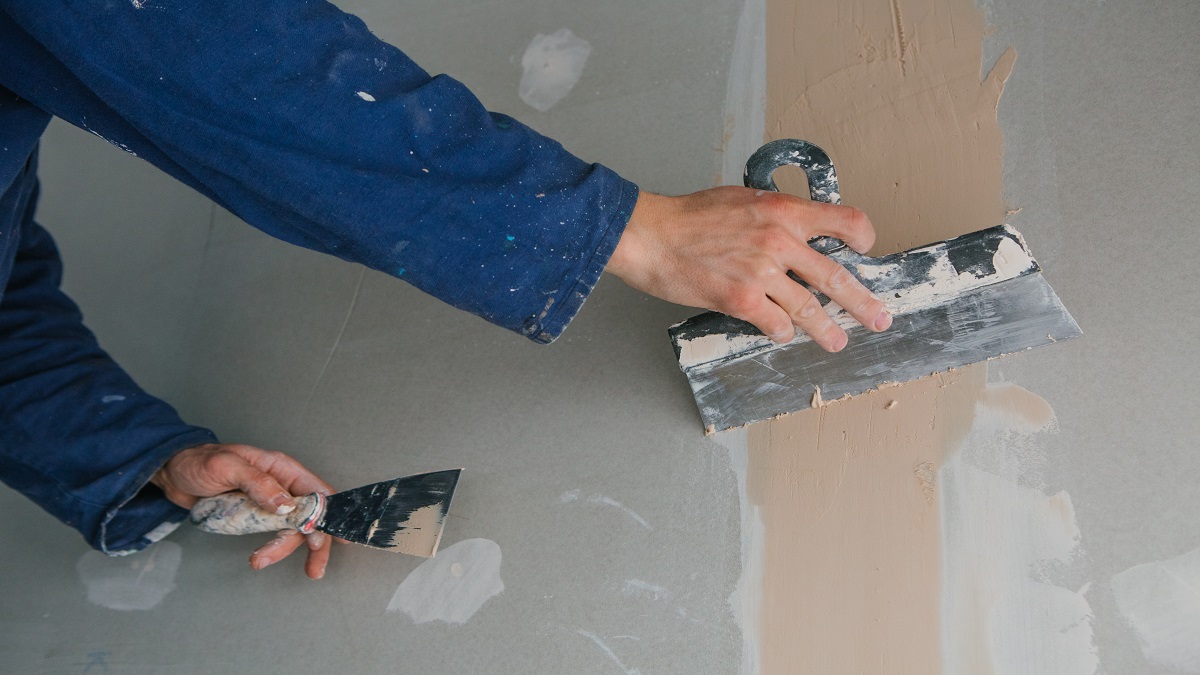But do you know what plastering UK is why is it so important? Let’s straight up get into it.
Why is Plastering Important?
Protection: Plastering helps you in protecting your walls from wear and tear. Plaster usually acts as an extra layer of protection against the elements in older buildings of UK.
Aesthetic Appeal: When the plaster is applied properly, it creates a smooth and flawless surface that improves the appearance of your home.
Structural Support: It adds a layer of strength to walls and ceilings to make them more resilient to cracks and damage.
Types of Plastering in the UK
There are many types of plasters that are commonly used in UK. Each of them has their own purpose. Here are some listed for you:
1. Skimming
This type of plaster involves a thin layer over an existing surface to give a smooth finish. Plasterers usually use skimming for renovations when the underlying surface is uneven but still in good condition.
2. Dry Lining
Dry lining involves fixing plasterboard to your walls and ceilings instead of using wet plaster. This is a quicker process and usually used in new buildings.
3. Float and Set
This is the traditional method of plastering in UK, where a thick base coat is applied before finishing with a skim coat. It is ideal for homes with older walls that need extra strength and support.
Essential Plastering Tools
Every plasterer needs the right set of tools to achieve that desired flawless finish. Here is a quick look at some of the most common plastering tools:
| Tool | Used for |
| Hawk | It is a flat tool that is used to hold the plaster while it’s being applied to the wall. |
| Trowel | The is a key tool for spreading and smoothing the plaster. |
| Plastering float | This tools is used to level out plaster after it has been applied. |
| Plastere’s bucket | It holds the mix of the plaster. |
| Mixing paddle | This attaches to a drill and is used to mix plaster to the right consistency. |
| Plastering rule | It helps in assuring a smooth and even finish by scraping leftover plaster off the wall. |
These plastering tools are essential for a professional job. Using the right tool makes all the difference if you want to achieve a smooth and even texture.
The Process of the Plastering
When plastering is done by a professional it seems pretty simple. But in reality, it’s a skilled trade that requires patience and accuracy. Here is a basic breakdown of the plastering process for you:
- Preparation: The surface needs to be prepped before any plaster can be applied to it. This would start with cleaning the walls, repairing any cracks, and applying a bonding agent to help the plaster stick.
- Mixing: The plaster comes in powder form and it is mixed with water to make a smooth paste. Getting the right consistinency is the key. It should not be very thick nor too runny.
- Application: The plaster is then applied to the area in thin layers with the help of plastering trowel. The process usually starts from the top of the wall and working down.
- Smoothing: After the plaster is applied to the walls then the plasterer uses a plastering float to smooth out the surface evenly without any bumps.
- Drying: Plaster needs plenty of time before you paint the walls or decorate them. It entirely depends on the thickness of the plaster and the temperature of the room. So it can take anywhere from a day to a week.

Why is Plastering so Important in UK?
The United Kingdom has a unique combination of old and new buildings. Many of those buildings rely on plastering to maintain their durability and beauty. The older homes with their generational elements usually require expert plastering jobs to preserve their goodness. Here is why plastering UK is important:
- Preservation of Heritage: Many homes in the UK were built centuries ago and plastering plays a huge role in keeping these buildings in good shape till now. Plastering is part of the country’s architectural legacy it’s restoring old and cracked walls or adding a smooth finish to a new attachment.
- Weather Resistance: There is no denying that the UK’s weather can be tough on your home. Dampness, cold, and even heat can affect your walls and cause cracks and damage. So, plastering is the only and best way to keep your building or house in good shape. A good plastering job can stop moisture from getting into the walls and protect them from additional damage.
- Modern Aesthetics: Plastering is one amazing thing that helps you achieve that sleek and modern look that many homeowners want. A smooth, freshly plastered wall is perfect for any interior design style.
Finding the Right Plasterer for Your Home
As of now you already know how important plastering is in UK so it’s obvious that finding the right plasterer is very essential. But while hiring one how would you determine the right one? Here are a few top-picked tips for you:
Must Check their Qualifications
A skilled plasterer should have all the relevant qualifications or a portfolio of the work they have done previously. Many plastering jobs need an NVQ Level 2 qualification in plastering to make sure that they know what they are doing.
Ask Around for Recommendations
Word of mouth is very powerful. If you know someone in your circle who has recently had plastering done in their home then ask them about their experience and if they would recommend the plasterer.
Look for the Reviews
Since we live in a digital era, many plasterers now showcase their work online where the clients can leave reviews about how much they liked their service. You can check websites like TheTradeCore and My Builder to see if the plasterer available is reliable and skilled.
How to Prepare Your Home for a Plastering Job
Preparing to get the job done is essential whether you are having your small room plastered or your whole house. Here is how you can get ready for your plastering work.
Clear the Area: Make sure that your room is free from any furniture or barriers. Plastering can be a messy job, so it’s a good idea that you remove everything valuable or fragile.
Protect the Floor: Lay down the dust sheets to protect your flooring from splashes of plaster.
Communicate with Your Plasterer: Make sure that you and your plasterer are on the same page about the work to be done. Discuss the timeframes, costs, and any other expectations before they start working.
Final words
Plastering UK is more than just an essential trade. It’s a craft that makes sure that your home stays strong, beautiful, and safe. Whether you’re updating a room, fixing a cracked wall, or building an extension, a good plastering job will transform your space.
So, the next time you need a smooth finish or to repair damaged walls, you will know why hiring a professional plasterer is worth paying for.

